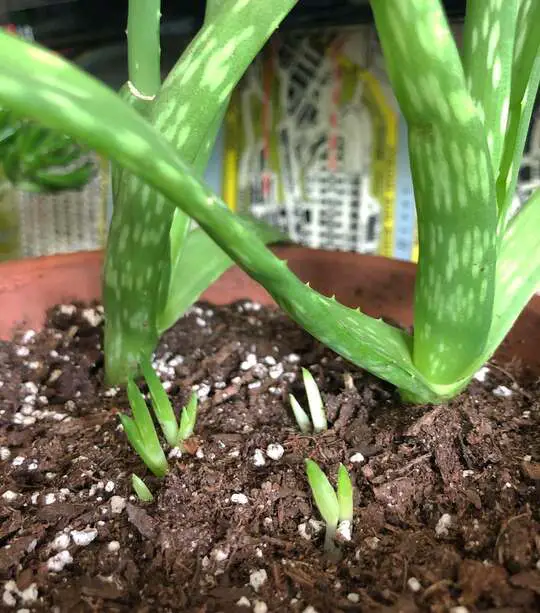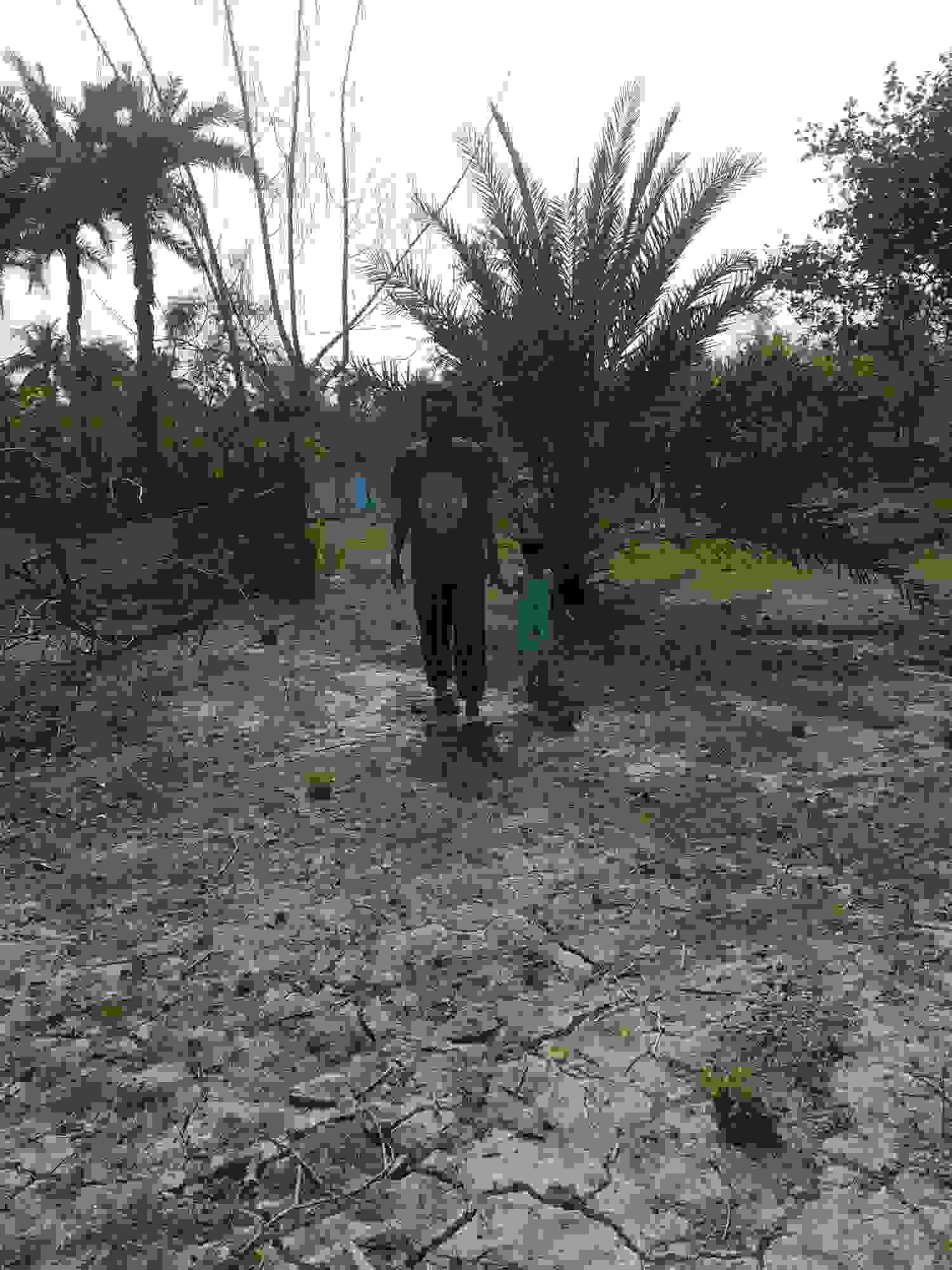Creating the perfect aloe vera soil mix is essential for growing healthy, vibrant plants. Aloe vera thrives best in well-draining soil that mimics its natural desert environment, so knowing how to make your own aloe vera soil mix can help you ensure optimal moisture control and nutrient balance. This mix will provide the right environment for root development, preventing issues like root rot and overwatering.
In this guide, you’ll learn simple, practical steps to blend materials that enhance aeration and drainage, while also supplying essential nutrients. Whether you’re a beginner or experienced gardener, this homemade soil mix will give your aloe vera plants the foundation they need to flourish.

Why Aloe Vera Requires Special Soil
Unique Water Needs of Aloe Vera
Aloe vera is a succulent plant adapted to arid environments. Unlike many other houseplants, it stores water in its thick leaves and prefers infrequent watering. Because of this, aloe vera requires soil that drains quickly to avoid waterlogging. Soil that retains too much moisture can lead to root rot, a common and potentially fatal problem for aloe plants.
Soil Composition and Drainage
Aloe vera thrives in sandy, gritty soil that mimics its native desert habitat. Special soil mixes are designed to have excellent drainage by combining components such as sand, perlite, and peat moss or coconut coir. These materials create air pockets around the roots, improving oxygen flow and preventing compacted, soggy soil.
Nutrient Requirements and pH Balance
Besides drainage, aloe vera soil needs to be slightly acidic to neutral, with a pH between 6.0 and 7.0. This pH range allows the plant to absorb nutrients efficiently. Using regular garden soil or heavy potting mixes often results in poor aeration and wrong pH, leading to stunted growth or yellowing leaves. Special soil mixes ensure aloe vera receives the right nutrients and environment for healthy development.
The Right Ingredients for Aloe Vera Soil Mix
Sandy Components for Drainage
The foundation of an effective aloe vera soil mix is materials that promote fast drainage. Coarse sand or horticultural sand is ideal because it prevents water retention and mimics the plant’s natural desert conditions. Avoid fine sand, as it can compact and reduce aeration. Another excellent option is pumice or perlite, which are lightweight, porous volcanic materials that improve soil aeration and water flow.
Organic Matter for Nutrient Supply
While aloe vera prefers lean soil, it still benefits from some organic content for nutrients and moisture retention. Peat moss and coconut coir are commonly used organic components. Peat moss is slightly acidic, which complements aloe vera’s pH needs, while coconut coir is more sustainable and retains water without becoming soggy. Use these in moderation to avoid excess moisture retention.
Optional Additives for Enhancements
Some gardeners add small amounts of compost or worm castings for a nutrient boost, but these should be minimal to prevent water retention issues. Additionally, a tiny amount of activated charcoal can be mixed in to improve soil purity and reduce root diseases. For soil pH adjustment, a pinch of garden lime can be added if the soil tends to be too acidic.
Summary of Key Ingredients:
- Coarse sand or horticultural sand: 40-50%
- Perlite or pumice: 20-30%
- Peat moss or coconut coir: 20-30%
- Optional: small amounts of compost, worm castings, activated charcoal, garden lime
Collecting Ingredients for Your Soil Mix
Where to Source Quality Materials
Collecting the right ingredients is crucial to making a successful aloe vera soil mix. Coarse sand and perlite can be found at most garden centers or nurseries. When selecting sand, opt for horticultural or builder’s sand rather than play sand, as finer grains can clog soil pores. Organic materials like peat moss or coconut coir are widely available in gardening stores and online. Coconut coir is often sold in compressed blocks that expand when soaked in water.
Tips for Choosing Fresh and Clean Ingredients
Ensure all materials are clean and free of contaminants. Avoid soil or compost that contains weed seeds or diseases, as these can harm your aloe vera. When buying organic matter like compost or worm castings, select sterilized or well-aged products to reduce the risk of pests. It’s also best to avoid using garden soil directly unless sterilized, as it may retain too much moisture or harbor pathogens.
Preparing Ingredients for Mixing
Before combining, it’s helpful to dry ingredients like peat moss or coconut coir slightly if they are overly moist. Rinse coarse sand if it appears dusty to remove fine particles that can settle and reduce drainage. For perlite and pumice, a quick visual check for debris is usually sufficient. Having all ingredients prepared and measured will streamline the mixing process and ensure a consistent soil blend for your aloe vera plants.
The Perfect Aloe Vera Soil Mix Recipe
Balanced Mix for Ideal Drainage and Nutrition
Creating the perfect aloe vera soil mix involves combining ingredients that ensure excellent drainage while retaining enough moisture and nutrients for healthy growth. A widely recommended ratio is:
- 50% coarse sand or horticultural sand
- 30% peat moss or coconut coir
- 20% perlite or pumice
This combination mimics the plant’s native arid environment by providing a light, airy structure that prevents waterlogging but still holds enough moisture for root absorption.
Step-by-Step Mixing Instructions
- Measure Ingredients: Use a clean container or wheelbarrow to measure the sand, peat moss (or coir), and perlite according to the ratio above.
- Combine Thoroughly: Mix the ingredients evenly, breaking up any clumps in the peat moss or coir to ensure uniform texture.
- Optional Additives: If desired, add a small handful of activated charcoal or worm castings (less than 5% of total volume) to improve soil health and nutrient content.
Why This Recipe Works Well
This recipe offers:
- Excellent drainage from coarse sand and perlite, reducing risk of root rot.
- Adequate moisture retention thanks to peat moss or coconut coir, which also provides a mild acidity suitable for aloe vera.
- Lightweight texture that encourages root aeration and growth.
- Nutrient support from optional organic additives without overwhelming the plant.
This mix supports vigorous aloe vera growth whether used in pots or garden beds, ensuring your plants thrive with minimal maintenance.
Potting Aloe Vera with Your DIY Soil Mix
Choosing the Right Container
When potting aloe vera with your DIY soil mix, selecting an appropriate container is key. Choose a pot with ample drainage holes to prevent water accumulation, which can cause root rot. Terracotta pots are ideal as they are porous and allow excess moisture to evaporate, helping maintain a dry root environment. The size of the pot should accommodate the aloe vera’s root system comfortably, typically 6 to 12 inches in diameter for mature plants.
How to Pot Aloe Vera Step-by-Step
- Prepare the Pot: Place a layer of small stones or broken pottery pieces at the bottom to improve drainage.
- Add Soil Mix: Fill the pot with your homemade aloe vera soil mix, leaving about 2 inches from the rim to allow room for watering.
- Planting: Gently remove the aloe vera from its current container, loosen the roots if compacted, and place it in the new pot. Fill around the roots with the soil mix and press lightly to eliminate air pockets.
- Watering: Water the plant lightly after potting, allowing excess water to drain. Then, wait until the soil is completely dry before watering again.
Caring Tips After Potting
- Position your aloe vera in bright, indirect sunlight to encourage healthy growth.
- Avoid overwatering; aloe vera thrives on infrequent watering due to its succulent nature.
- Check drainage regularly to ensure the soil mix isn’t retaining excess moisture, which could harm the roots.
Proper potting with the right soil mix sets the foundation for your aloe vera to thrive and flourish over time.
Common Mistakes to Avoid with DIY Soil
Overusing Organic Matter
A frequent mistake in making aloe vera soil mix is adding too much organic material like peat moss or compost. While these components provide nutrients and moisture retention, excess amounts can cause the soil to hold too much water. This creates a soggy environment that leads to root rot, fungal diseases, and poor plant health. Aim to keep organic matter around 20-30% of the mix for balanced moisture control.
Using Fine or Clayey Soil
Many gardeners mistakenly include fine garden soil or clay in their aloe vera mix, thinking it adds nutrients or stability. However, these soils compact easily and drastically reduce drainage and aeration. Compacted soil traps water and suffocates roots, causing the plant to weaken. Always opt for coarse sand and porous materials like perlite or pumice to ensure proper airflow and drainage.
Neglecting Drainage in Containers
Even with the perfect soil mix, failing to use pots with sufficient drainage holes is a critical error. Waterlogged soil due to poor drainage causes roots to rot quickly. Always select containers with multiple drainage holes and consider adding a drainage layer (such as gravel or broken pottery) at the bottom to enhance water flow away from roots. Proper drainage is essential to healthy aloe vera growth.
Adjusting Soil Mix for Different Climates
Hot and Dry Climates
In hot, arid regions, aloe vera plants benefit from a soil mix that drains very quickly to prevent water retention during infrequent rains or watering. Increasing the proportion of coarse sand or pumice to about 60% can improve drainage and reduce root rot risks. Adding less organic matter, around 10-15%, is advisable because the dry climate naturally limits moisture buildup. This adjustment helps keep the soil light and airy, matching the plant’s desert origins.
Humid and Rainy Climates
For humid or rainy areas, the main challenge is preventing excess moisture from saturating the soil. In these climates, increase perlite or pumice content to 30-40% to enhance aeration and drainage, which helps roots breathe and avoid fungal diseases. Use less peat moss or coir (15-20%) to reduce moisture retention, and consider adding activated charcoal to absorb excess moisture and toxins. Additionally, potting aloe vera in containers with extra drainage holes is crucial in these conditions.
Mild or Temperate Climates
In temperate climates with moderate rainfall and humidity, maintain a balanced soil mix close to the standard recipe: roughly 50% sand, 30% organic matter, and 20% perlite or pumice. This balance ensures adequate moisture retention during drier periods and sufficient drainage when rainfall is higher. Adjust the ratio slightly depending on seasonal changes, increasing organic content slightly in winter to retain moisture and reducing it in summer for better drainage.
Summary Table: Soil Mix Adjustments by Climate
| Climate Type | Sand/Pumice (%) | Organic Matter (%) | Perlite (%) | Notes |
|---|---|---|---|---|
| Hot & Dry | 60 | 10-15 | 25-30 | Maximize drainage, minimal organic matter |
| Humid & Rainy | 40-50 | 15-20 | 30-40 | Enhance aeration, add charcoal |
| Mild/Temperate | 50 | 25-30 | 20-25 | Balanced mix, seasonal tweaks |
Tailoring your aloe vera soil mix to your local climate conditions will greatly improve plant health and resilience, ensuring your aloe thrives year-round.
Testing Your Soil and Aloe Vera’s Response
How to Test Soil Drainage
To ensure your homemade aloe vera soil mix is effective, start with a simple drainage test. Fill a small pot with your soil mix and water it thoroughly. Observe how quickly the water drains through the soil—ideal soil should drain within 30 seconds to 2 minutes. Slow drainage indicates the mix retains too much moisture and may need more sand or perlite added. Conversely, if water drains almost instantly with no moisture retention, adding a bit more organic matter like coconut coir can help balance moisture levels.
Monitoring Aloe Vera’s Growth and Health
Once potted, closely monitor your aloe vera for signs that indicate how well the soil suits it. Healthy aloe leaves should be firm, fleshy, and have a vibrant green color. Yellowing leaves or soft, mushy roots can signal overwatering or poor drainage, suggesting the soil mix needs adjustment. Conversely, shriveled or dry leaves may indicate the soil is too dry or lacks adequate moisture retention.
Soil Testing for pH and Nutrients
Using a soil test kit, check the pH of your aloe vera soil mix—it should ideally be between 6.0 and 7.0. If the soil is too acidic or alkaline, the plant’s nutrient uptake may be impaired. You can adjust pH by adding small amounts of garden lime to raise it or elemental sulfur to lower it. Additionally, nutrient tests can help identify if the soil requires supplements like potassium or phosphorus, although aloe vera generally thrives in lean soil with minimal fertilization.
Regular testing and observation help you fine-tune your soil mix, ensuring your aloe vera grows healthy and strong.
Long-Term Aloe Vera Care with DIY Soil
Maintaining Soil Health Over Time
Even with a well-prepared DIY aloe vera soil mix, maintaining soil quality over time is essential for your plant’s longevity. After about a year, the soil may compact or lose its drainage efficiency due to organic matter breaking down. To refresh the soil, gently remove the aloe vera from its pot, shake off old soil from the roots, and replace it with a fresh batch of your homemade soil mix. This prevents root suffocation and promotes healthy growth.
Fertilizing and Nutrient Management
Aloe vera is a low-maintenance succulent that requires minimal fertilization. Use a balanced, diluted succulent fertilizer once or twice a year during the growing season (spring and summer) to supplement nutrients. Over-fertilizing can cause salt buildup in the soil, which stresses the roots and harms plant health. Your DIY soil mix, being lean and well-draining, naturally discourages nutrient accumulation, but occasional light feeding supports long-term vitality.
Monitoring Watering and Environmental Factors
Even with optimal soil, proper watering practices remain critical. Always allow the soil to dry out completely between watering to prevent root rot. In cooler months, reduce watering frequency as aloe vera enters dormancy. Additionally, ensure your aloe receives sufficient indirect sunlight and is protected from extreme cold or drafts. Regularly check the soil moisture and adjust care accordingly to keep your aloe vera thriving over the years.
Conclusion
Making your own aloe vera soil mix is a rewarding way to provide the ideal growing environment for this resilient succulent. By combining coarse sand, perlite or pumice, and organic matter like peat moss or coconut coir in balanced proportions, you ensure excellent drainage, proper aeration, and the right nutrient levels. Tailoring the mix to your local climate and maintaining soil health over time will keep your aloe vera thriving. With the right soil and care, your aloe vera plants will stay healthy, vibrant, and ready to provide their natural benefits for years to come.

I’m Shofi, a passionate gardener and blogger. I have 10+ years of experience in gardening and hold certifications in horticulture and garden design. I share my knowledge and skills through my garden blog to inspire and educate others on the joys of gardening. I try to provide valuable information and create a community for gardeners of all levels to connect and learn. My ultimate goal is to inspire others to start their own gardens and connect with nature.
